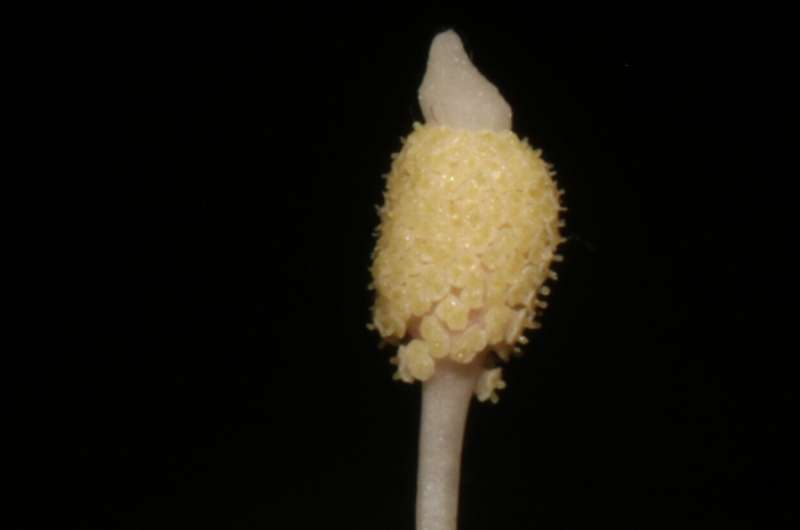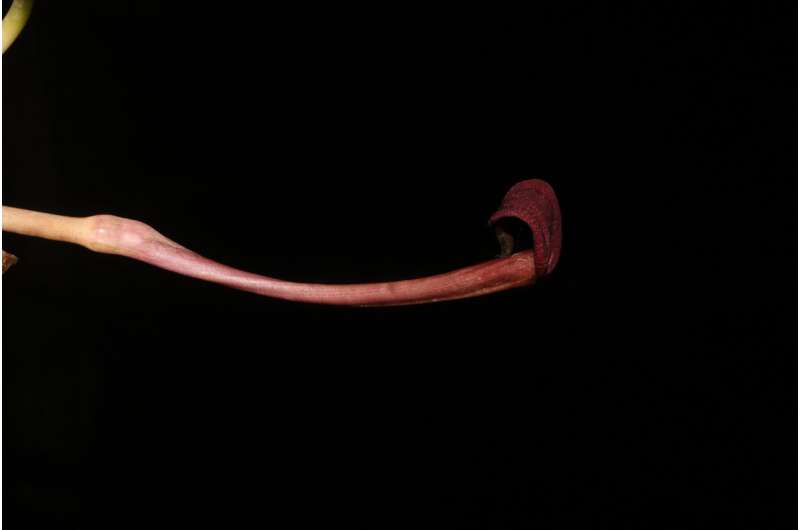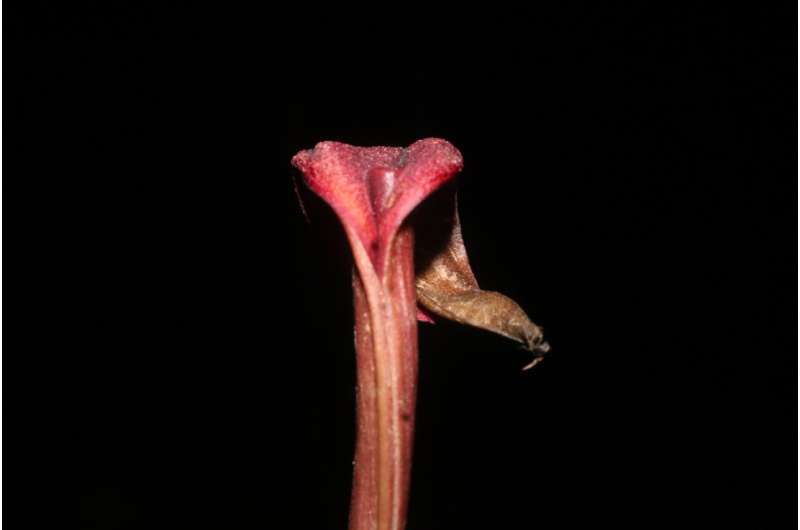Cryptocoryne zamboangaensis. Credit: Mark Arcebal K. Naive
With the help of three citizen scientists, an unknown Cryptocoryne population was found in one of the streams of Zamboanga del Norte province, Philippines, in March 2023. After careful morphological studies and literature review, researchers from Xishuangbanna Tropical Botanical Garden (XTBG) of the Chinese Academy of Sciences and their collaborators confirmed the unknown species was distinctive and new to science.
The new species was named Cryptocoryne zamboangaensis to refer to Zamboanga Peninsula where this species was discovered. The study was published in the Nordic Journal of Botany on Oct. 17.
Cryptocoryne zamboangaensis is a perennial, amphibious, large herb. It is similar to Cryptocoryne aponogetifolia for very long leaves and a long spathe tube, but recognized by a narrowly ovate, about 2 cm broad, densely verrucose bright purple spathe limb with a distinct narrow collar.
-
Cryptocoryne zamboangaensis. Credit: Mark Arcebal K. Naive
-
Cryptocoryne zamboangaensis. Credit: Mark Arcebal K. Naive
The new species is endemic to the Zamboanga Peninsula. So far, the species has only been found in the type locality where fewer than 250 mature individuals have been observed. The population is currently under threat by anthropogenic activities. The researchers thus proposed its conservation status as "Endangered" according to the International Union for Conservation of Nature (IUCN) standard.
"Zamboanga has the greatest number of recorded Cryptocoryne species, also known as water trumpet plants. With the discovery of this new endemic species, the Philippines now holds 11 taxa of Cryptocoryne," said Mark Arcebal Naive, a Philippine student working for his Ph.D. in XTBG.
More information: Mark Arcebal K. Naive et al, Discovery through citizen science III: Cryptocoryne zamboangensis (Araceae), a new water trumpet discovered in Zamboanga del Norte, Philippines, Nordic Journal of Botany (2023). DOI: 10.1111/njb.04181
Provided by Chinese Academy of Sciences


























